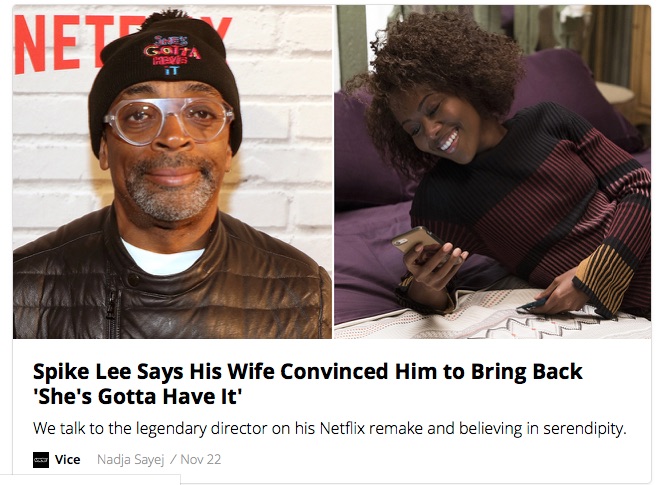
Nov 27 2017
‘She’s Gotta Have It’
Artist Sees Her Art
as Opportunity,
Not Responsibility
Tatyana Fazlalizadeh shed’s light
on the real-life harassment
that inspires much of her work.
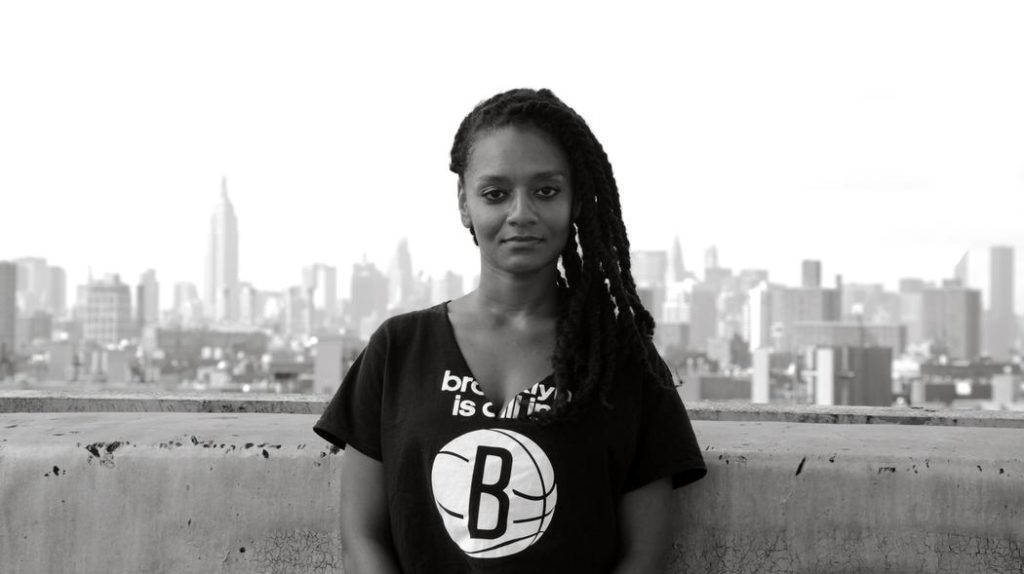
Courtesy of Tatyana Fazlalizadeh
by Noel Ransome
In Spike Lee’s original She’s Gotta Have It, the main character, Nola Darling (Tracy Camilla Johns), is assaulted by a former boyfriend, Jamie Overstreet. It begins with a slut-shame, a toss of the the label “freak” over her sexual promiscuity. His next words are a warning, “you don’t want me to make love to you, you want me to fuck you.” Then he pushes Nola onto a bed before the eventual rape scene. It’s a sequence that Spike Lee has since regretted, and one he’s often blamed on his own immaturity. It was clumsy, insensitive, and told through the optics of an unapologetic male perspective.
Spike Lee is pretty much that guy; the person you either love-to-hate, or hate-to-love for scenes like this—that fuck your lawn approach. It’s what you have to consider with Lee’s body of work. That his words, and actions are liable to be insensitive and batshit insane. He’s advanced a career in telling a “Truth” that’s paramount to anyone else’s, even when that truth is only his truth.
The Netflix remake of She’s Gotta Have It seems to be a side step from that approach through. Spike Lee isn’t in the fresh, non-woke, internet-less era of 1986, where he can freely write the story of a black woman as a black man. He’s in the now of 2017; a moment when women across the board are demanding that stories portray them without a bootleg, male-interpretation of the shit. And since then, Lee’s acknowledged it through his hirings.
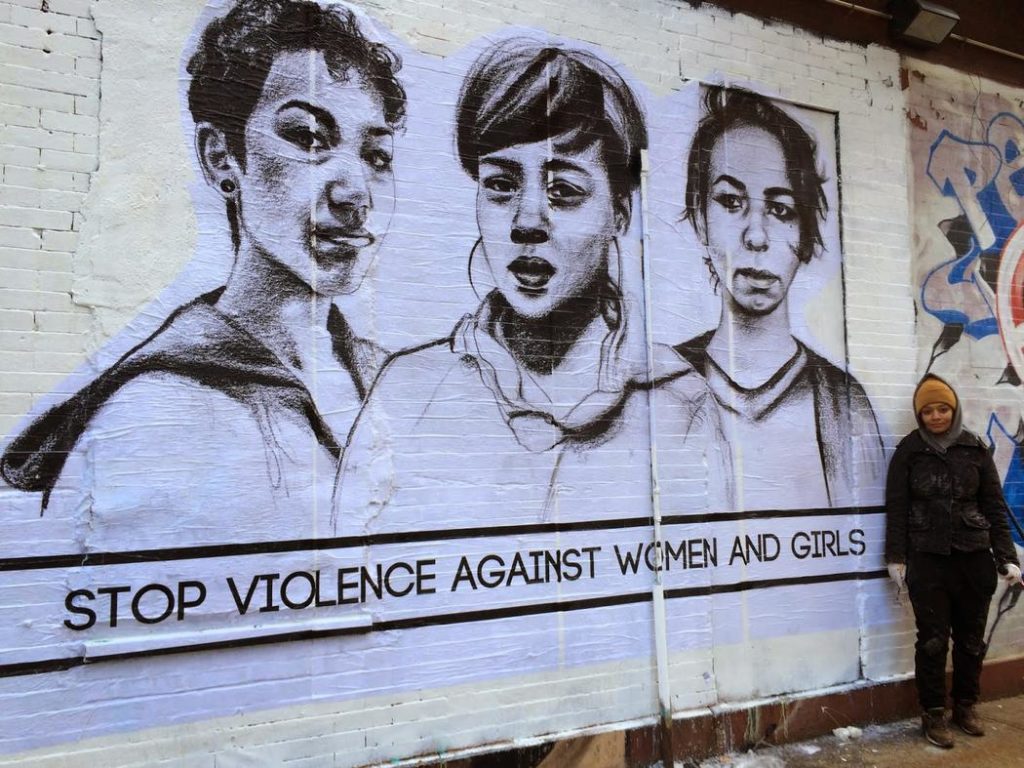
via Tatyana Fazlalizadeh
Oklahoma City born artist, Tatyana Fazlalizadeh was one such hire. She was the Nola before the 2017 comeback—known over the years for her use of the craft as a means of social activism for women of colour. Her global Stop Telling Women to Smile 2012 campaign for instance around street harassment, was in part, a huge inspiration for Nola Darling’s newfound artistic expression. Through that same reputation found in the streets of New York, Spike Lee hired her as the show’s main art consultant and painter of Nola’s many pieces.
“I’ve had issues with his work over the years in how he’s portrayed black women,” says the soft spoken Tatyana over a phone conversation. “But it’s Spike Lee, he’s brilliant, he’s a legend, and absolutely, I was down.”
During a telephone call, Tatyana Fazlalizadeh spoke candidly with me about She’s Gotta Have It, the craft she uses to speak to women in particular, and why she’s hopeful for women in a post-Harvey Weinstein era.
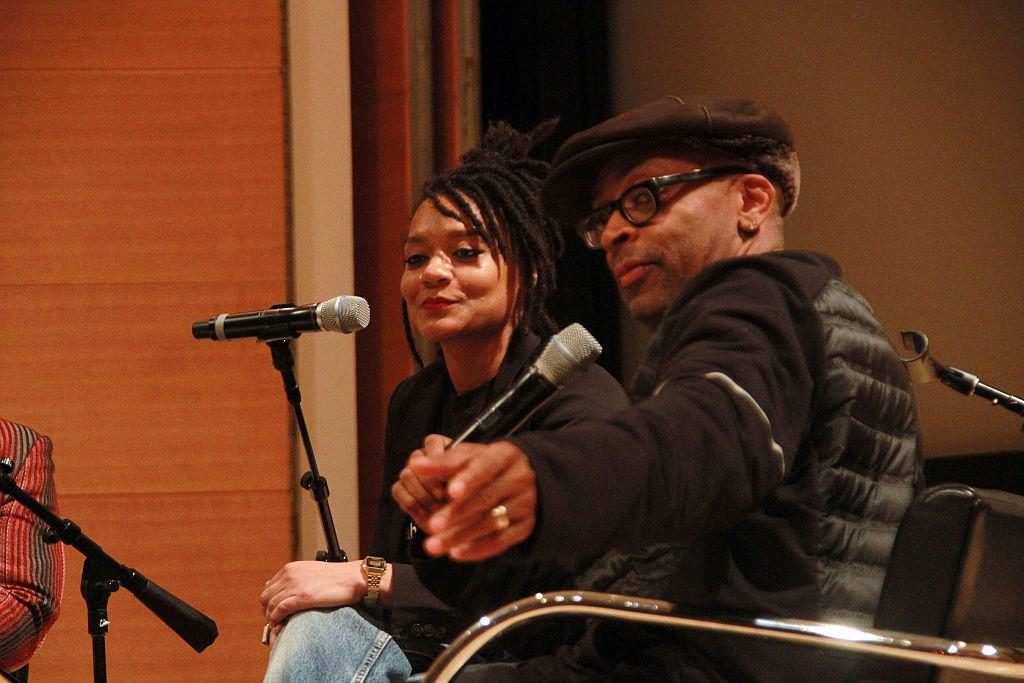
In Conversation: Brooklyn Renaissance With Spike Lee And Tatyana Fazlalizadeh | via Getty
VICE: Let’s talk about She’s Gotta Have it, were you a fan the 1986 film?
Tatyana Fazlalizadeh: First of all, I loved the original. Yes, I had my issues, and yes, I didn’t like the sexual assault that happened in the original, but Spike has already addressed his regret in that. As a young black woman though, watching a movie like that, it was something I had never seen before. Because it’s now a 10-episode series, there’s greater opportunity to dig deeper into characters like Nola Darling. And this time around, her art work and profession seems to play an equal part. In the film, we never really got a chance to see all that. It was mostly about romantic relationships with these dudes, but in the remake, her art is another character. She’s passionate about it but also insecure at the same time. And we get to see her working through it all, which is really great. It only adds another layer to her as a human being.
Elaborate on that human being aspect, especially as a black woman.
As a black woman, I’m always looking for us portrayed as regular people. Yes, we go through a lot of stuff, and experience oppression all the time, but we’re also just regular people. We’re not the super or weak woman all the time. We’re not super sexual or non-sexual all the time, we’re just regular human beings. And yes, we don’t always have our career together. A lot of times in media, we the trope of women who are super successful, independent women. But a lot of times, we just don’t have our shit figured out. We’re trying to make it like everyone else. The show just gets that in a lot of ways, and I’m hoping that future seasons can unlayer that aspect to these women characters. It’s something we’re really starting to see, not just in this show but in others, where we’re being allowed to be full human beings. I’m really excited about that.
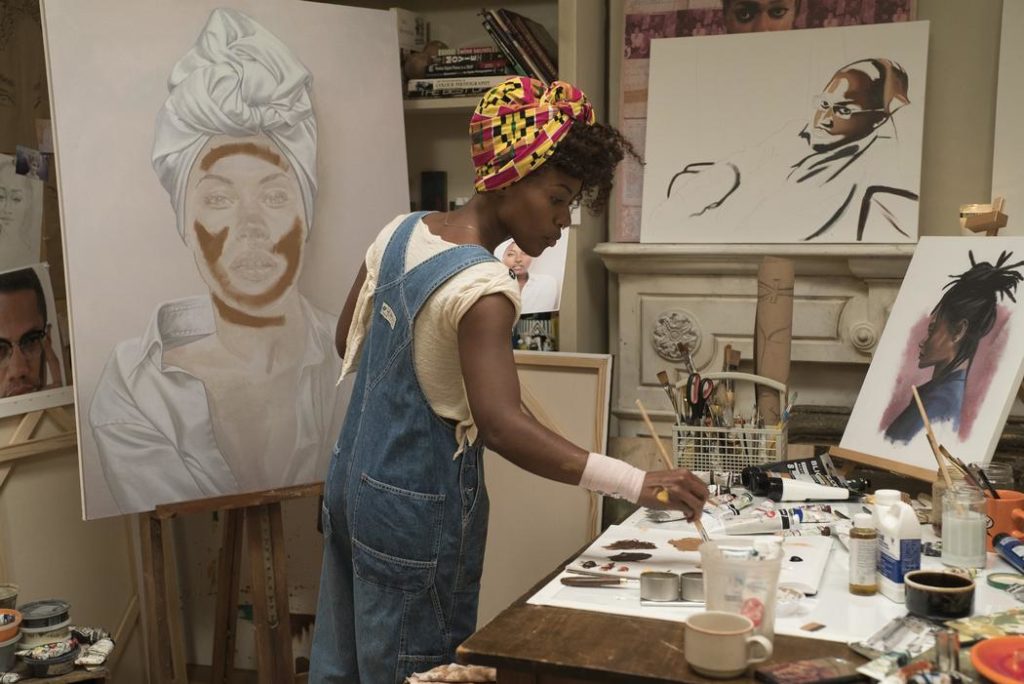
Nola Darling played by Dewanda Wise | Courtesy of Netflix.
Your art of course is featured throughout this show. It’s also inspired by your previous series, Stop Telling Women to Smile. You don’t have to be compelled to use your artistry or voice to do what you do. Elaborate on why it’s so important for you to do so.
I’m an artist, and through that, I’ve always had the desire to talk about the things that impact me through my work. I never wanted to just make pretty pictures or things that are aesthetically pleasing. My work had to address things that were important to me and my community. The truth is, I think about race and genre all the time, because I’m experiencing the world in a way that forces me to face them head on.
For me, the importance is always there. I always approach my work with an idea, issue and an audience in mind. It’s not just about myself, it’s for a particular audience. Usually when there’s an issue to address, there’s the oppressed and the oppressor, whether they know it, or want to be it or not. So in the case of Stop Telling Me to Smile, we’re talking about sexism, and the women that are oppressed by this group, men, who are perpetrating the problem. Basically, I’m making work for women. They’re the audience, and the men are as well, to a lesser degree. It’s always about who I’m talking to, what I’m trying to say to them, and where’s the best place to have an impact that can affect people positively. That always dictates the direction I want to go in.
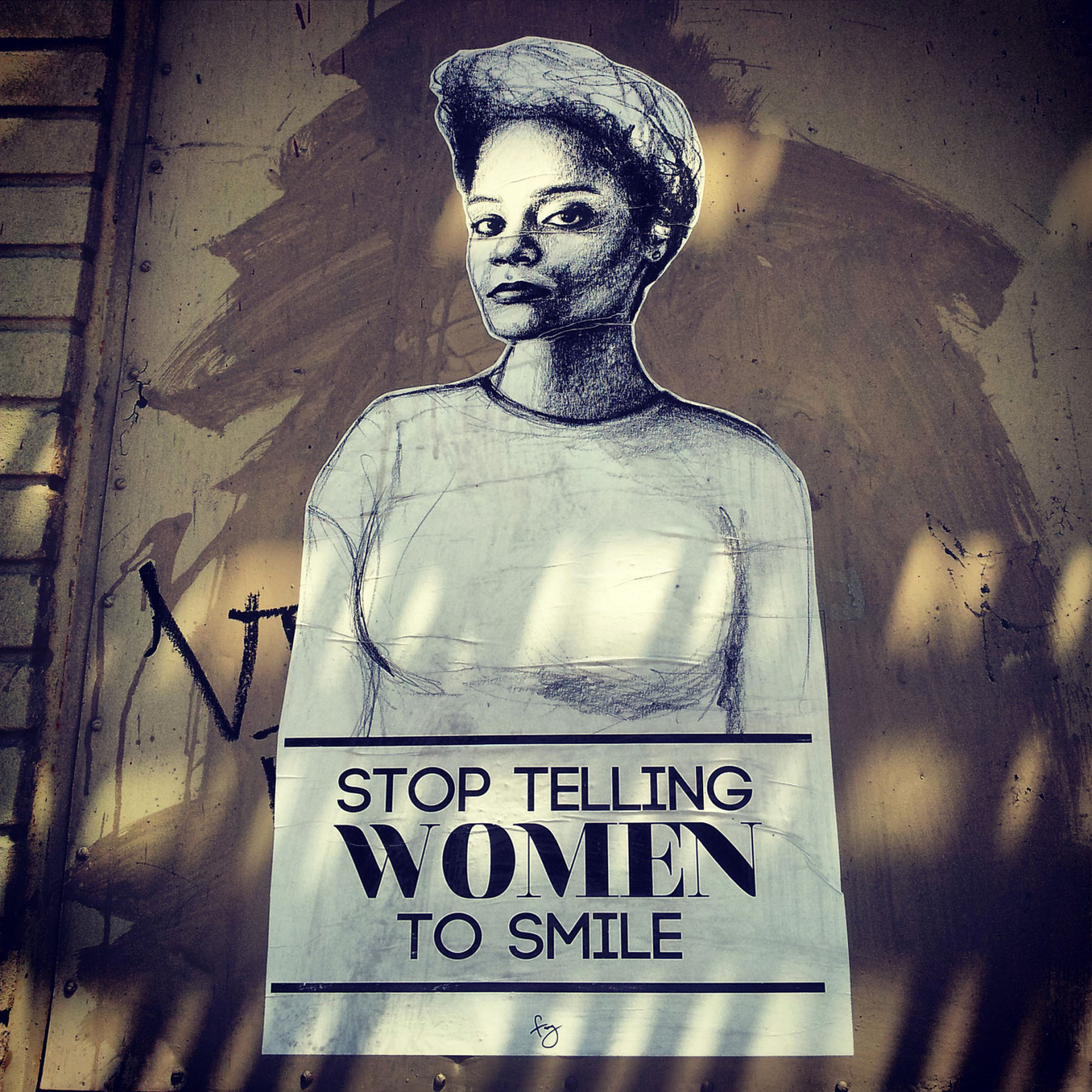
So when talking about harassment, without the pressures of getting too personal, can you tell me about the kind of things you’ve faced that inspired works like Stop Telling Women to Smile?
Honestly, I’ve been experiencing forms of sexual harassment since I was a kid. It’s always been a part of my life. It’s not so much the actual experience of what has happened, but the fact that it happens all the fucking time…a culmination. For example, I was working on a mural in Philly with a bunch of dudes for an art collective. Basically I was the only woman working on the project. So you’re outside, it’s summer, we’re on lifts, up in the air, and we’re painting walls. Of course, I’m wearing shorts because it’s hot out, so you’d have men walking down the street, whistling and talking at me while I’m on a lift working on a wall. I’ve had a bunch of male friends in my life, and I’ve always noticed how my public space is very different from the way they experience the same public spaces. It let me know that even while performing labour, I’m still in the hands of men. I’m still being sexually objectified. Things like that have been a huge motivator.
I gotta ask. As a black writer, because there’s so few like me, I sometimes feel like it’s a responsibility to use my craft to further the causes that affect folks like me, vs. the fun stuff. Do you personally see what you do as a responsibility as a black woman?
You know…I don’t know if it’s a responsibility. Everyone doesn’t have to use their voice. Sure, it’s a grand and beautiful idea if every single person used their skill or talent for the act of activism, community, fighting and resisting the terrible things that are happening to us. It’s beautiful and lofty, but a lot of times, it’s asking a lot out of people who are simply trying to live their lives and get through the day, to march and be an activist. I don’t think that’s necessary nor my responsibility. I can easily paint pictures of flowers every day and I’d be good, but I’m doing this because I want to do it, and I really care about these things. If my art is the best way to help, I want to be able to contribute in the way that I can. If an artist doesn’t feel that way, it is what it is.
Follow Noel Ransome on Twitter.

